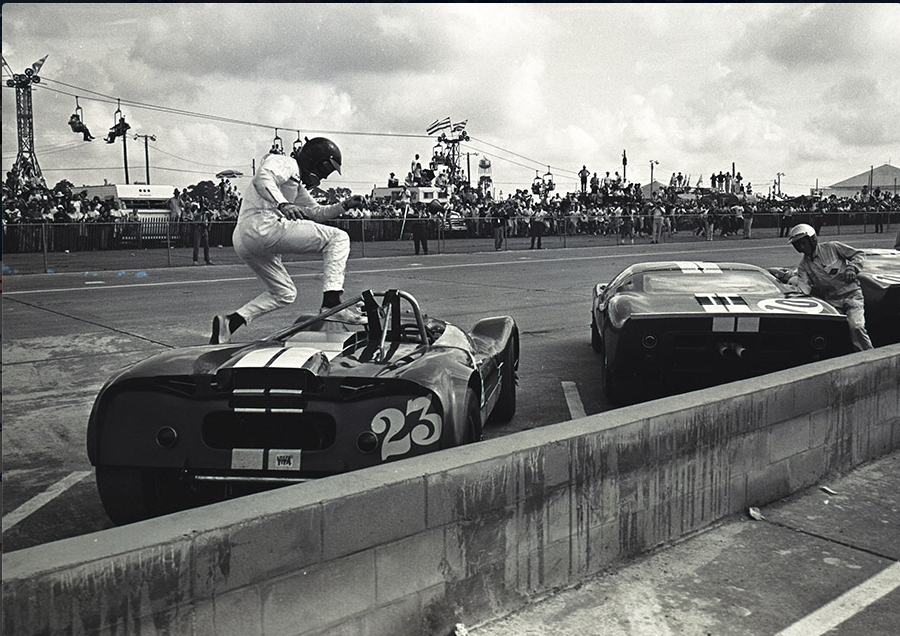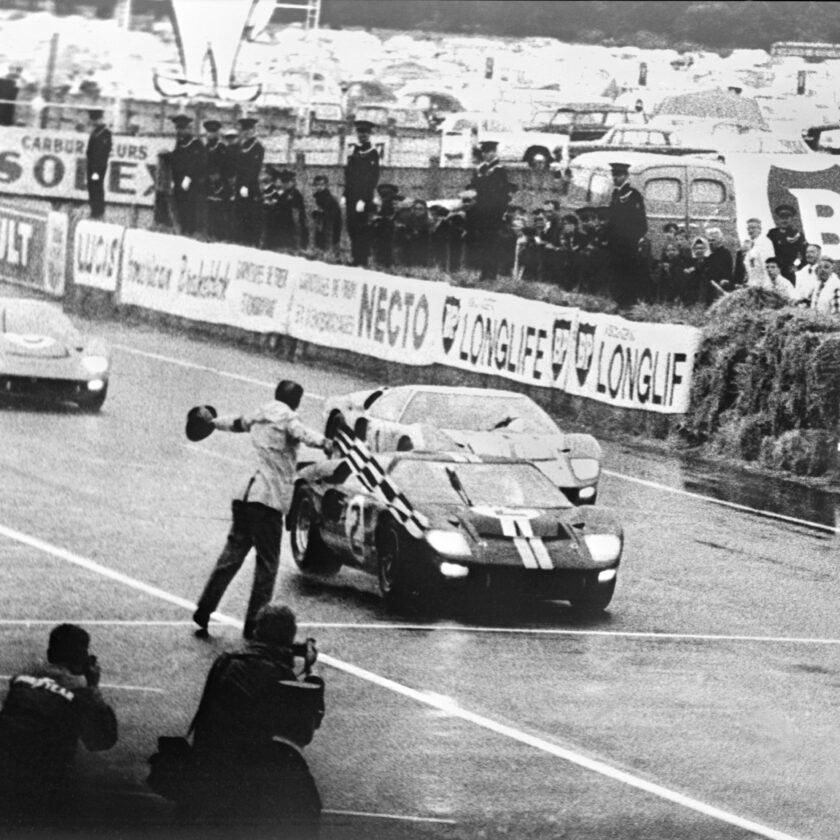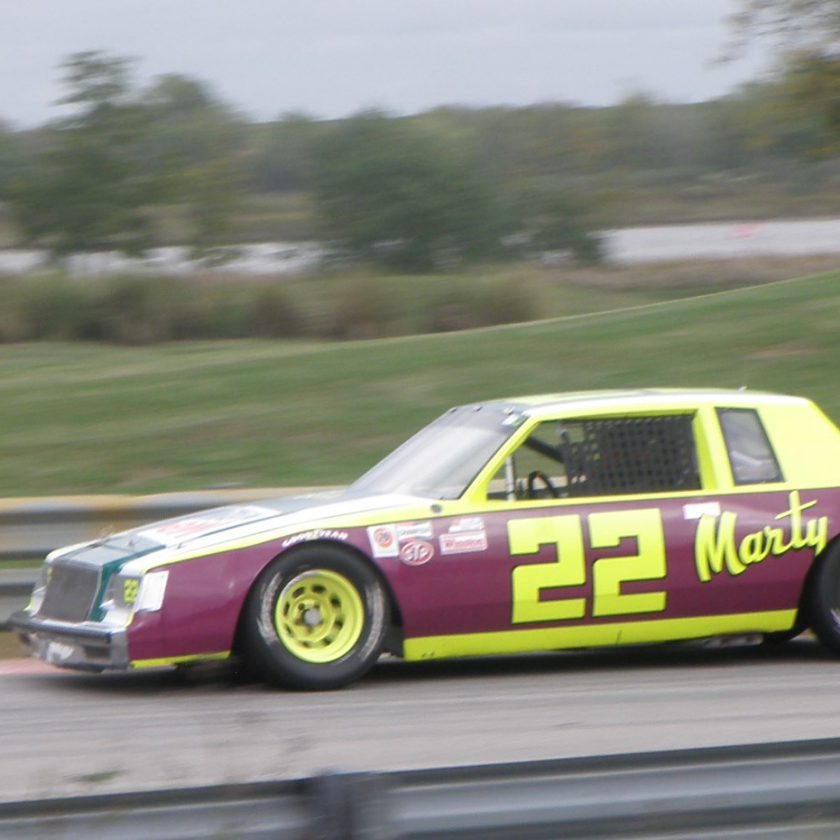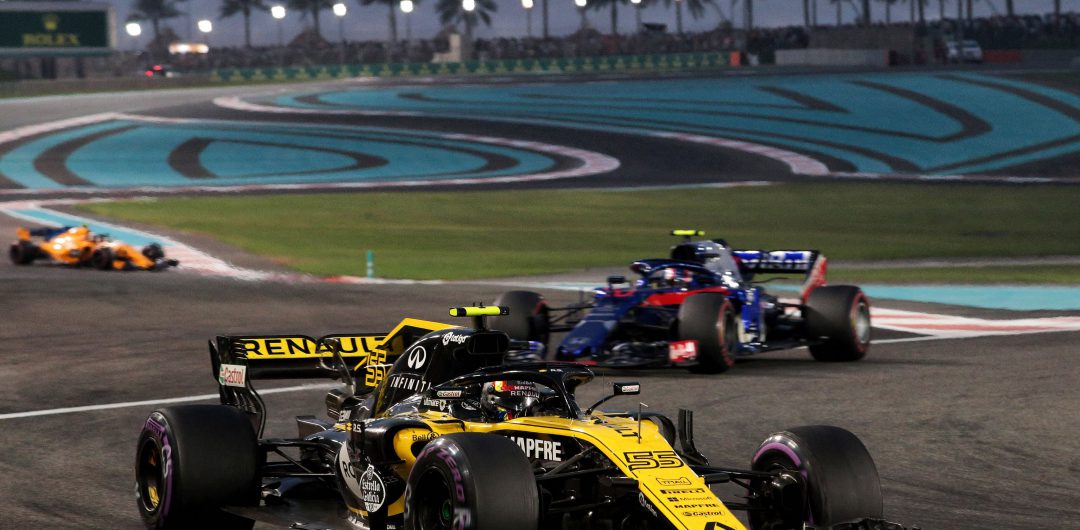Growing up in Washington, DC, in the 50’s, my sports interests were limited to those I played myself. Baseball, football, and basketball, depending on the seasons. The only racing I was aware of was the Indianapolis 500, since it got lots of coverage in the daily newspaper, usually when someone was killed there.
In 1961, when I was 10 years old, ABC began showing a program called “The Wide World of Sports.” They showed things like logrolling, barrel-jumping , and other oddities, but they also showed some auto racing. From the first time I saw Graham Hill’s BRM going around the station hairpin at Monte Carlo, I was permanently hooked. A few weeks later they showed highlights from the 24 Hours of Le Mans, won that year by Phil Hill and Olivier Gendebien in a Ferrari. My young mind was astonished that people raced cars nonstop for 24 hours, stopping only to get fresh tires, fill the tank, and change the driver.
From that point on I was a complete sponge when it came to sports car and Formula One racing, looking for everything I could find in the newspaper, and buying Sports Car Graphic and Road and Track at my local drug store, and inhaling every story about exotic places where people raced cars, liked Monza, the Nurburgring, Spa, Watkins Glen, and Sebring, among many other places.
Some American races were broadcast live on radio, but nothing live on tv at the time. Wide World of Sports or some other outlet would show highlights of the more important races a week or two after they had taken place, since all that film needed to be edited, and a narration supplied, usually by the gravel-voiced Les Keiter, whose voice became ubiquitous on race highlights shows of the time, now available on Youtube.
In 1964 I listened to the Daytona Continental on the radio. That year the race was a 2000 Kilometer race, and for GT cars only. The race was dominated early on by the new Cobra Daytona Coupe, but a pit fire cost them the lead, and the race was won by Ricardo and Pedro Rodriguez, in a Ferrari 250 GTO LM.
Ford was all in that year with the new GT-40, attempting to break Ferrari’s dominance in long-distance sports car racing. Carroll Shelby’s Cobras were giving Ferrari all they could handle in the GT class, and Ford hoped to duplicate that success in the Prototype category with the GT-40.
Ford planned to compete at the Sebring 12 Hours in 1964, but the cars were not ready. Their first race was the Nurburgring 1000 Kilometers, just a few weeks before Le Mans, The solo entry retired with mechanical problems which would plague them all season, with all 3 cars retiring from Le Mans with gearbox problems. They were using Colotti transaxles at the time, which were scrapped by the end of the season, following further problems at Reims and the Grand Prix of Paris.
Deeply dissatisfied with the lack of progress, Ford split up the GT-40 program among three teams for the 1965 season, giving two cars to the successful NASCAR Holman and Moody team, two to Shelby-American Racing, with the remaining two cars run by Ford Special Vehicles in England.

Photo: Sebring International Raceway
The 1965 season began very auspiciously for Ford. The Daytona race was still a 2000 Kilometer event, and would not become the 24-Hour race we know so well now until the following year in 1966. Ford dominated the race, winning overall in a Shelby-American GT-40, and winning the GT class as well with the Cobra Coupe. Ford finished 1-4, with 2 GT-40’s and two Cobra Coupes, setting the stage for the Sebring 12 Hours the following month.
Alec Ullmann, the originator and promoter of the Sebring race, decided to spice up the race by adding a class he called Sports Prototype, designed for cars currently competing in the US Road Racing Championship, the forerunner of the Can-Am. Cars entered in this class included two Chaparrals, cars I had learned to love reading about them in racing magazines. They were beautiful, innovative, and successful, the brain child of two wily Texas oilmen who were also trained engineers; Jim Hall and Hap Sharp. Other entries in the class included a Cooper King Cobra and Lola T-70, entered by another Texas oilman, John Mecom, and a Lotus 19-Ford entered by Dan Gurney’s All-American Racers, driven by Gurney and Jerry Grant. None of these cars were expected to finish, since virtually all of their usual races were no longer than 200 miles, but Mr. Ullmann expected them to add some spice to the early hours of the race, before it settled down into a battle between the GT-40’s entered by Shelby-American, the only team ready to compete in the race, and the Ferraris, with the Holman and Moody and Ford teams concentrating on preparations for Le Mans. The Chaparrals dominated qualifying with the Hall/Sharp car becoming the first to lap the circuit, then 5.2 miles long, in under 3 minutes.
I had my radio warmed up and ready for the start, which was at 11am in those days, sitting comfortably in my bedroom. The Chaparral drivers took their time at the start, back when the drivers stood on one side of the track, with their cars parked opposite, and at the drop of the flag they ran across the track, jumped in their cars, did up their belts, and took off. Making sure their belts were done up tight, the Chaparrals were trailing about a dozen cars at the end of the first lap, but they quickly closed in and took the lead on the 4th lap, though they were being closely chased by the Gurney Lotus. Gurney’s car began to suffer mechanical problems, and gradually fell out of contention, and then the race. I was enjoying the broadcast immensely, and the Chaparral continued to dominate through the afternoon, building a lead of several laps by the halfway point, and the Shelby GT-40’s were leading the Prototype class and the Cobras controlling the GT class. Shortly after 5pm, the skies opened and there was a tremendous thunderstorm that went on for almost an hour. Lap times for the fastest cars went from the 3 minute range to nearly 10 minutes, and the radio announcer got especially excited when a Triumph Spitfire took a lap back from the leading Chaparral on the front straight. Tires were floating down the pit lane, and numerous cars had their electrical systems short out with all the water in the cars. The second Chaparral had been slowed by various issues, including a faulty voltage regulator, and was not close to the lead. As a cautionary move, the lead Chaparral was brought in during the deluge and had its voltage regulator replaced, since little time would be lost to the cars chasing in the storm.
Back on the slowly drying track, the Chaparral continued to control the race, winning by 4 laps over the GT-40 of Ken Miles and Bruce McLaren, which won the Prototype class. The Cobra Coupe of Bob Bondurant and Jo Schlesser finished 4th overall and won the GT class. Ford would again fail to win Le Mans in 1965, but they finally broke through with a 1-2-3 finish in 1966, and won again the next three years. Jim Hall and the Chaparral team built a coupe-bodied car to compete in the prototype class in 1966, winning the Nurburgring 1000 Kilometers, with the first car to appear with an airbox to bring more air into the engine. In 1967 their car became the first to compete with a high-mounted rear wing, and with the radiators moved to sidepods in the middle of the car, and out of the nose. They won one race in 1967 as well, this time the BOAC 500 Kilometer race at Brands Hatch. Chaparral cars continued to innovate in the Can-Am series, and later in Indycars.
Sitting by my radio that day in 1965 is one of the happiest memories of my youth. It was a day I will never forget and a memory I always treasure.



